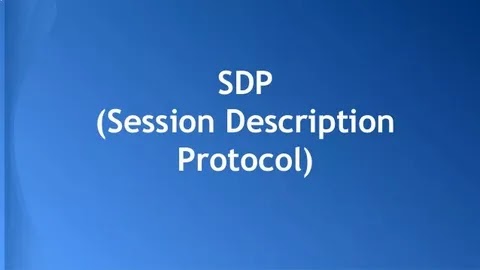SDP: Crafting the Blueprint for Seamless Multimedia Sessions
In the intricate dance of digital communication,

setting the stage for multimedia sessions involves more than just connecting two points. Enter the Session Description Protocol (SDP), a crucial format for describing streaming media initialization. This article delves into the SDP's inner workings, its emergence as a standard, and the influential role it plays in today’s networked world.
Historical Context and Development:
SDP was first detailed in RFC 2327 in 1998 by the IETF, with the intention to describe multimedia sessions for the purposes of announcement and invitation. Conceived in a time when the internet was burgeoning with possibilities, SDP was part of the pioneering efforts to standardize data exchange for the multimedia revolution.
Technical Description and Utilization:
As a format, SDP does not deliver media by itself but describes the details needed to participate in a session: media types, formats, transport protocols, and endpoint addresses. Commonly used in conjunction with RTP and SIP, SDP lays down the map for media transport, allowing systems to understand how to exchange media.
Strengths and Weaknesses:
SDP's simplicity in format is a robust foundation for extensibility and interoperability. Yet, it is a static protocol lacking mechanisms for negotiation or media control, which means it relies on other protocols to accommodate dynamic session management.
Expert Insight:
"SDP has remained a vital component in media streaming protocols due to its ease of use and adaptability," says Dr. Elaine Ramirez, a network protocols specialist.
Real-Life Applications:
From VoIP calls to conference bridges and streaming services, SDP descriptions are quietly orchestrating every step of the media delivery process, ensuring that when you press "play" or "call," the content flows as expected.
Evaluating Alternatives:
With the emergence of technologies like WebRTC, there are shifts in session management dynamics, yet SDP's flexibility ensures that it remains at the heart of many systems, enabling compatibility and straightforward session descriptions.
Concluding Reflections:
SDP stands testament to the foresight of its creators, encapsulating the fundamental need for a standard that could simplify the representation of complex media interactions. As we navigate a predominantly online communicative environment, SDP's initial design philosophy continues to resonate, highlighting the importance of clear descriptors in an ever-evolving digital landscape.

